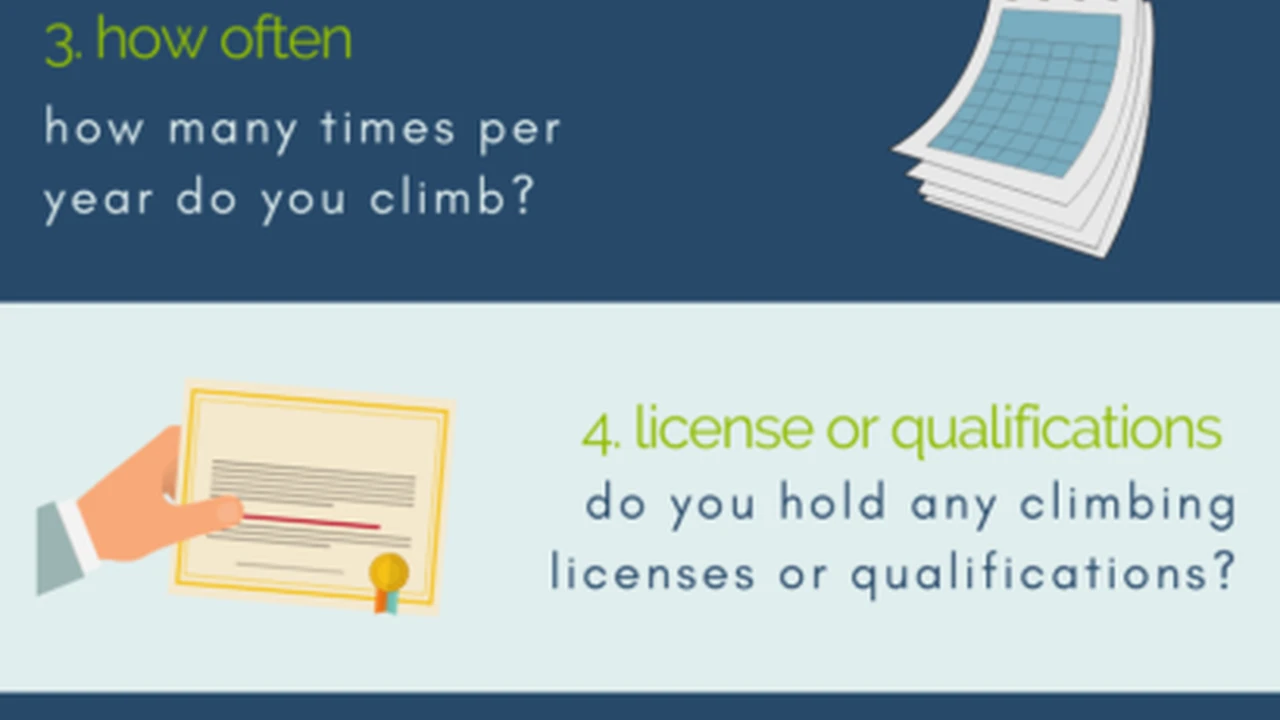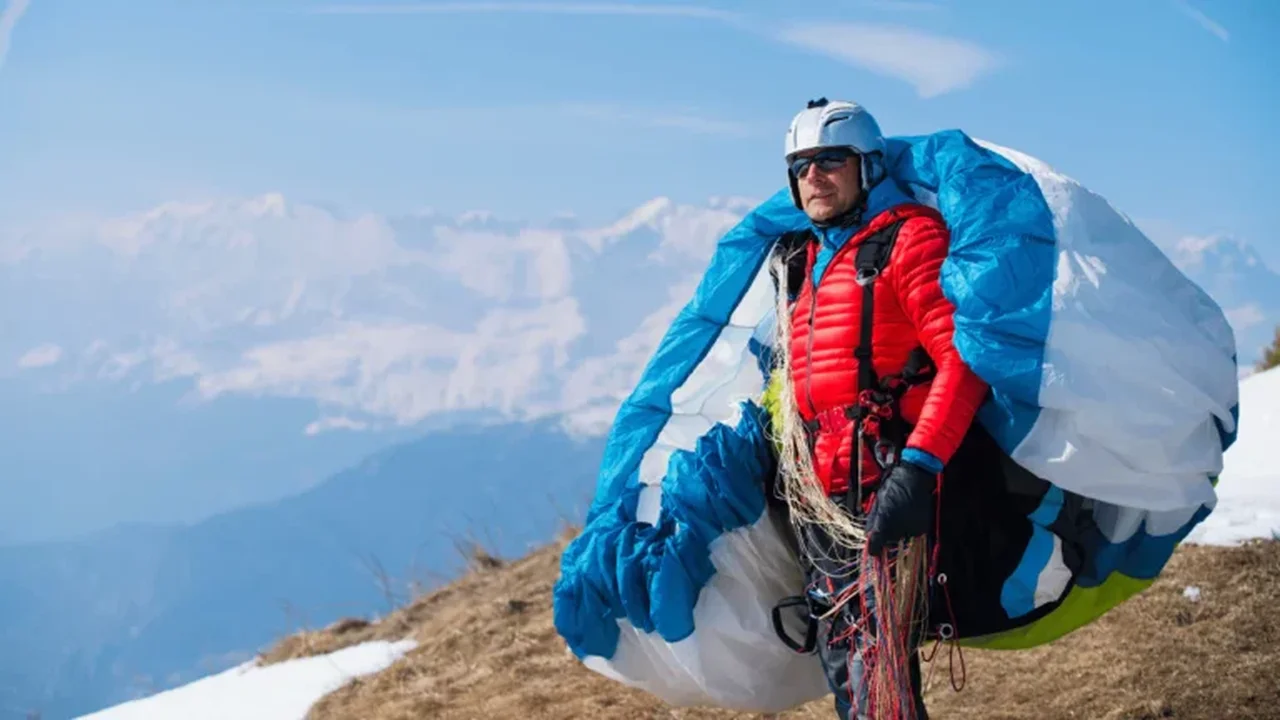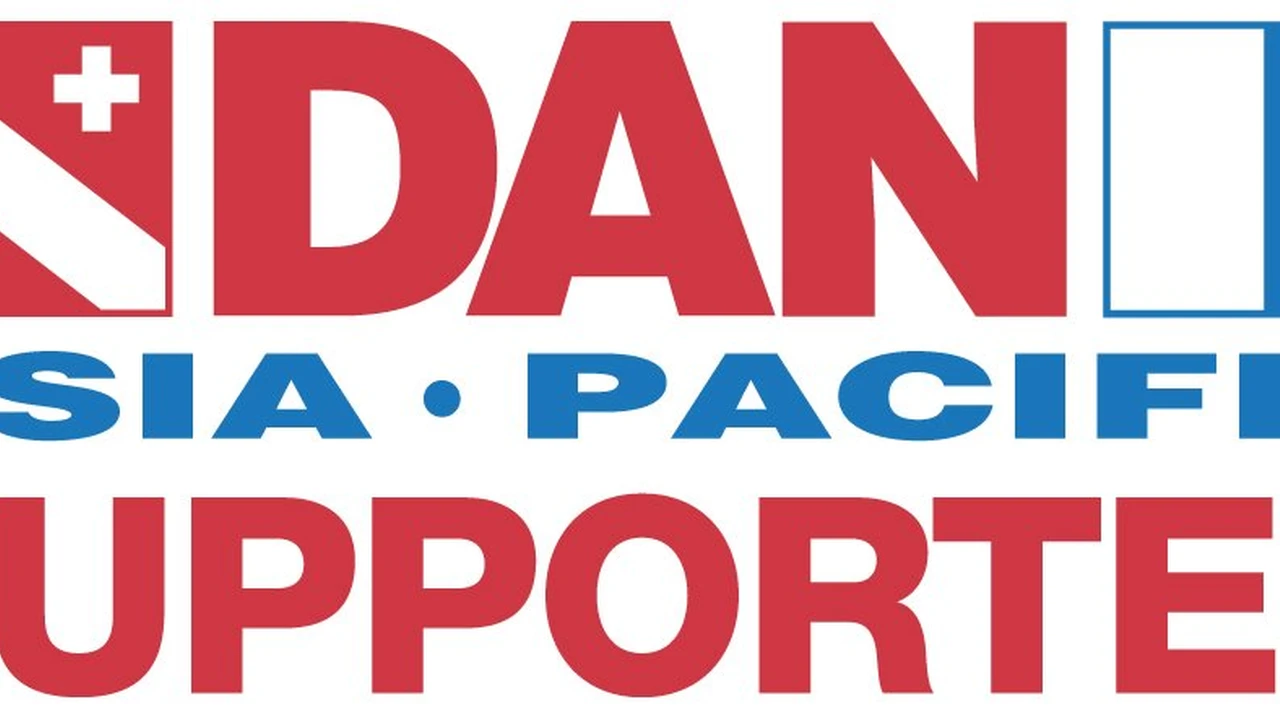Guide to Choosing the Right Climbing Insurance Coverage
Selecting the right coverage is crucial for climbing insurance. We explain the different types of coverage and help you choose the best option for your needs.

Understanding the Basics of Climbing Insurance Coverage Needs
So, you're planning a climbing trip? Awesome! But before you start packing your ropes and carabiners, let's talk about something crucial: climbing insurance. It's not the most glamorous part of planning, but trust me, it's essential. Climbing, whether it's bouldering in your local gym or scaling a remote mountain, comes with inherent risks. A twisted ankle, a fall, or even just a sudden storm can lead to hefty medical bills or the need for an expensive rescue. That's where climbing insurance steps in.
Think of climbing insurance as your safety net. It's designed to cover the costs associated with climbing-related accidents and emergencies. This can include medical expenses, evacuation fees (especially important in remote areas), and even repatriation if you need to be transported back home. But not all climbing insurance policies are created equal. They vary in coverage limits, exclusions, and the types of climbing activities they cover. That's why it's vital to understand the different types of coverage available and choose a policy that aligns with your specific climbing plans and risk tolerance.
This guide will walk you through the key aspects of climbing insurance, helping you make an informed decision and ensuring you're adequately protected on your next climbing adventure. We'll cover everything from the different types of coverage to consider, how to assess your needs, and even recommend some specific insurance products. Let's get started!
Key Types of Climbing Insurance Coverage Explained
Okay, let's dive into the different types of coverage you'll typically find in a climbing insurance policy. Understanding these will help you tailor your insurance to your specific needs.
Medical Expense Coverage for Climbing Injuries
This is probably the most important aspect of climbing insurance. Medical expense coverage pays for the costs associated with treating injuries sustained while climbing. This can include doctor's visits, hospital stays, surgery, medication, and rehabilitation. The coverage limits can vary significantly, so make sure you choose a policy with adequate coverage for potential injuries. Consider that medical costs in some remote areas can be exceptionally high, especially if you need to be airlifted to a hospital.
For example, if you're climbing in Yosemite National Park and suffer a fall requiring a helicopter evacuation and a few days in a hospital, the medical bills could easily reach tens of thousands of dollars. A good medical expense coverage will cover these costs, preventing you from facing a massive financial burden.
Emergency Evacuation Coverage: Getting You to Safety After a Climbing Accident
Emergency evacuation coverage is crucial, especially if you're planning on climbing in remote or mountainous areas. This coverage pays for the costs associated with evacuating you from the climbing site to a medical facility. This can involve helicopter rescue, ambulance transportation, and even the cost of bringing in specialized rescue teams. Evacuation costs can be astronomical, especially if you're in a remote location, so make sure your policy has adequate evacuation coverage.
Imagine you're climbing in the Himalayas and suffer a serious injury. Getting you to a hospital could require a helicopter rescue, which can easily cost upwards of $20,000. Without emergency evacuation coverage, you'd be responsible for paying that entire amount out of pocket.
Repatriation Coverage: Getting You Home After a Serious Climbing Injury
Repatriation coverage pays for the costs associated with transporting you back to your home country if you suffer a serious injury or illness while climbing. This can include the cost of a medical escort, air ambulance transportation, and other related expenses. Repatriation can be incredibly expensive, so make sure your policy has adequate coverage if you're traveling internationally.
Let's say you're climbing in Argentina and suffer a severe spinal injury. Getting you back to the US for treatment could require a specialized air ambulance, which can cost tens of thousands of dollars. Repatriation coverage would cover these costs, ensuring you can receive the necessary medical care back home.
Gear Protection Coverage: Protecting Your Valuable Climbing Equipment
Climbing gear can be expensive, and it's vulnerable to damage or loss during your trip. Gear protection coverage reimburses you for the cost of replacing or repairing damaged or lost climbing equipment. This can include ropes, harnesses, helmets, climbing shoes, and other essential gear. Check the policy limits and exclusions carefully, as some policies may not cover certain types of gear or may have a deductible.
For instance, if your backpack containing your expensive climbing rope and harness is stolen from your car while you're on a climbing trip, gear protection coverage would reimburse you for the cost of replacing them.
Trip Cancellation and Interruption Coverage: Protecting Your Climbing Trip Investment
Sometimes, unforeseen circumstances can force you to cancel or interrupt your climbing trip. Trip cancellation and interruption coverage reimburses you for non-refundable expenses, such as flights, accommodation, and pre-paid tours, if you have to cancel or interrupt your trip due to a covered reason. Covered reasons can include illness, injury, death in the family, or natural disasters. Check the policy details carefully to understand what circumstances are covered.
Imagine you're scheduled to go on a climbing trip to Thailand, but you break your leg a week before your departure. Trip cancellation coverage would reimburse you for the non-refundable costs of your flights and hotel bookings.
Assessing Your Climbing Insurance Needs: Factors to Consider
Now that you understand the different types of coverage, let's talk about how to assess your specific needs. Several factors can influence the type and amount of climbing insurance you need.
Type of Climbing Activity: From Gym Climbing to Mountaineering
The type of climbing you're planning to do is a major factor. If you're just bouldering in a local gym, you might not need as much coverage as if you're planning a multi-day mountaineering expedition in the Himalayas. Consider the risks associated with each activity and choose a policy that adequately covers those risks.
- Gym Climbing: Lower risk, but still potential for injuries like sprains or fractures. Basic medical expense coverage might be sufficient.
- Sport Climbing: Moderate risk, with potential for falls and injuries requiring medical attention. Consider higher medical expense coverage and emergency evacuation coverage.
- Trad Climbing: Higher risk, especially in remote areas. Comprehensive medical expense coverage, emergency evacuation coverage, and gear protection are essential.
- Mountaineering: Highest risk, with potential for serious injuries, altitude sickness, and the need for helicopter rescue. Comprehensive coverage, including medical expense, emergency evacuation, repatriation, and gear protection, is crucial.
Location of Your Climbing Trip: Remote Areas vs. Developed Areas
The location of your climbing trip is another important factor. If you're climbing in a remote area, you'll need more comprehensive coverage than if you're climbing in a developed area with easy access to medical facilities. Remote areas often have higher evacuation costs and limited medical resources, so make sure your policy reflects these realities.
- Developed Areas: Easier access to medical facilities and transportation. Lower evacuation costs.
- Remote Areas: Limited access to medical facilities and transportation. Higher evacuation costs. Helicopter rescue may be necessary.
Your Existing Health Insurance Coverage: What Does It Cover Abroad?
Before you purchase climbing insurance, review your existing health insurance policy to see what it covers while you're traveling abroad. Some health insurance policies offer limited coverage for international travel, while others offer no coverage at all. If your health insurance policy doesn't provide adequate coverage, you'll need to purchase a more comprehensive climbing insurance policy.
Contact your health insurance provider and ask them specifically about their coverage for climbing-related accidents and emergencies while you're traveling abroad.
Your Risk Tolerance: How Much Risk Are You Willing to Take?
Ultimately, the amount of climbing insurance you need depends on your risk tolerance. If you're a risk-averse person, you'll want to purchase a more comprehensive policy with higher coverage limits. If you're more comfortable with risk, you might be able to get away with a less comprehensive policy. However, keep in mind that even a minor accident can result in significant expenses, so it's always better to err on the side of caution.
Recommended Climbing Insurance Products: Brands, Scenarios, and Price Comparisons
Okay, let's get down to brass tacks and talk about some specific climbing insurance products. I'll give you a few recommendations, along with details about their coverage, ideal scenarios, and approximate prices. Remember, prices can vary depending on your age, destination, and the length of your trip, so always get a personalized quote before making a decision.
World Nomads Explorer Plan: A Solid All-Around Option for Climbing Travel Insurance
World Nomads is a popular choice among adventure travelers, and their Explorer Plan offers comprehensive coverage for a wide range of climbing activities. It includes medical expense coverage, emergency evacuation coverage, repatriation coverage, gear protection, and trip cancellation/interruption coverage. They also offer 24/7 emergency assistance, which can be invaluable in case of an emergency.
- Coverage: Comprehensive, including medical, evacuation, repatriation, gear, and trip cancellation.
- Ideal Scenario: Suitable for most climbing trips, especially those involving sport climbing, trad climbing, or mountaineering in remote areas.
- Price: Approximately $100-$200 for a two-week trip, depending on your age and destination.
IMG Signature Travel Medical Insurance: Affordable Medical Coverage for Climbers
IMG Signature Travel Medical Insurance is a good option if you're primarily concerned about medical expenses. It offers high coverage limits for medical expenses and emergency evacuation, but it doesn't include gear protection or trip cancellation coverage. This can be a good choice if you already have separate coverage for these aspects of your trip.
- Coverage: Excellent medical and evacuation coverage, but limited coverage for gear and trip cancellation.
- Ideal Scenario: Suitable for climbers who already have separate coverage for gear and trip cancellation, or who are primarily concerned about medical expenses.
- Price: Approximately $50-$100 for a two-week trip, depending on your age and destination.
Global Rescue Signature Travel Insurance: Premium Climbing Insurance with Rescue Services
Global Rescue is a premium provider that specializes in emergency evacuation and rescue services. Their Signature Travel Insurance policy includes comprehensive medical expense coverage, emergency evacuation coverage, and access to their global network of medical and security professionals. This is a great option if you're planning a particularly risky climbing trip or if you want the peace of mind of knowing you have access to the best possible rescue services.
- Coverage: Premium medical, evacuation, and rescue services. Includes access to Global Rescue's network of professionals.
- Ideal Scenario: Suitable for high-risk climbing trips, such as mountaineering expeditions in remote areas, or for climbers who want the highest level of protection.
- Price: Approximately $300-$500 for a two-week trip, depending on your age and destination.
Comparison Table: Climbing Insurance Options at a Glance
Here's a quick comparison table to help you see the key differences between these three options:
| Insurance Provider | Coverage | Ideal Scenario | Approximate Price (2 weeks) |
|---|---|---|---|
| World Nomads Explorer Plan | Comprehensive | Most climbing trips | $100-$200 |
| IMG Signature Travel Medical Insurance | Excellent Medical & Evacuation | Medical expense focus | $50-$100 |
| Global Rescue Signature Travel Insurance | Premium Rescue Services | High-risk expeditions | $300-$500 |
Understanding Policy Exclusions and Limitations in Climbing Insurance
It's crucial to understand the exclusions and limitations of your climbing insurance policy. These are the situations and activities that are *not* covered by the policy. Common exclusions include:
- Pre-existing medical conditions: Some policies may exclude coverage for pre-existing medical conditions, unless you purchase a specific rider or waiver.
- Reckless behavior: Injuries sustained while engaging in reckless or illegal behavior may not be covered.
- Unapproved activities: Some policies may only cover specific climbing activities, such as sport climbing or trad climbing. Make sure your policy covers the specific activities you're planning to do.
- Climbing without proper certification: If you are climbing without proper certification or supervision, the policy may not cover you.
Read the policy details carefully to understand all of the exclusions and limitations. If you have any questions, contact the insurance provider for clarification.
Tips for Finding the Best Climbing Insurance Coverage for Your Needs
Here are a few final tips to help you find the best climbing insurance coverage for your needs:
- Shop around and compare quotes: Don't just settle for the first policy you find. Get quotes from multiple providers and compare their coverage, exclusions, and prices.
- Read the fine print: Take the time to read the policy details carefully. Pay attention to the coverage limits, exclusions, and deductibles.
- Consider your specific needs: Choose a policy that aligns with your specific climbing plans and risk tolerance.
- Contact the insurance provider with questions: If you have any questions about the policy, don't hesitate to contact the insurance provider for clarification.
- Purchase your policy well in advance of your trip: Don't wait until the last minute to purchase your climbing insurance policy. Purchase it well in advance of your trip to ensure you have adequate coverage in place.
By following these tips, you can find the best climbing insurance coverage for your needs and enjoy your climbing trip with peace of mind.
:max_bytes(150000):strip_icc()/277019-baked-pork-chops-with-cream-of-mushroom-soup-DDMFS-beauty-4x3-BG-7505-5762b731cf30447d9cbbbbbf387beafa.jpg)






